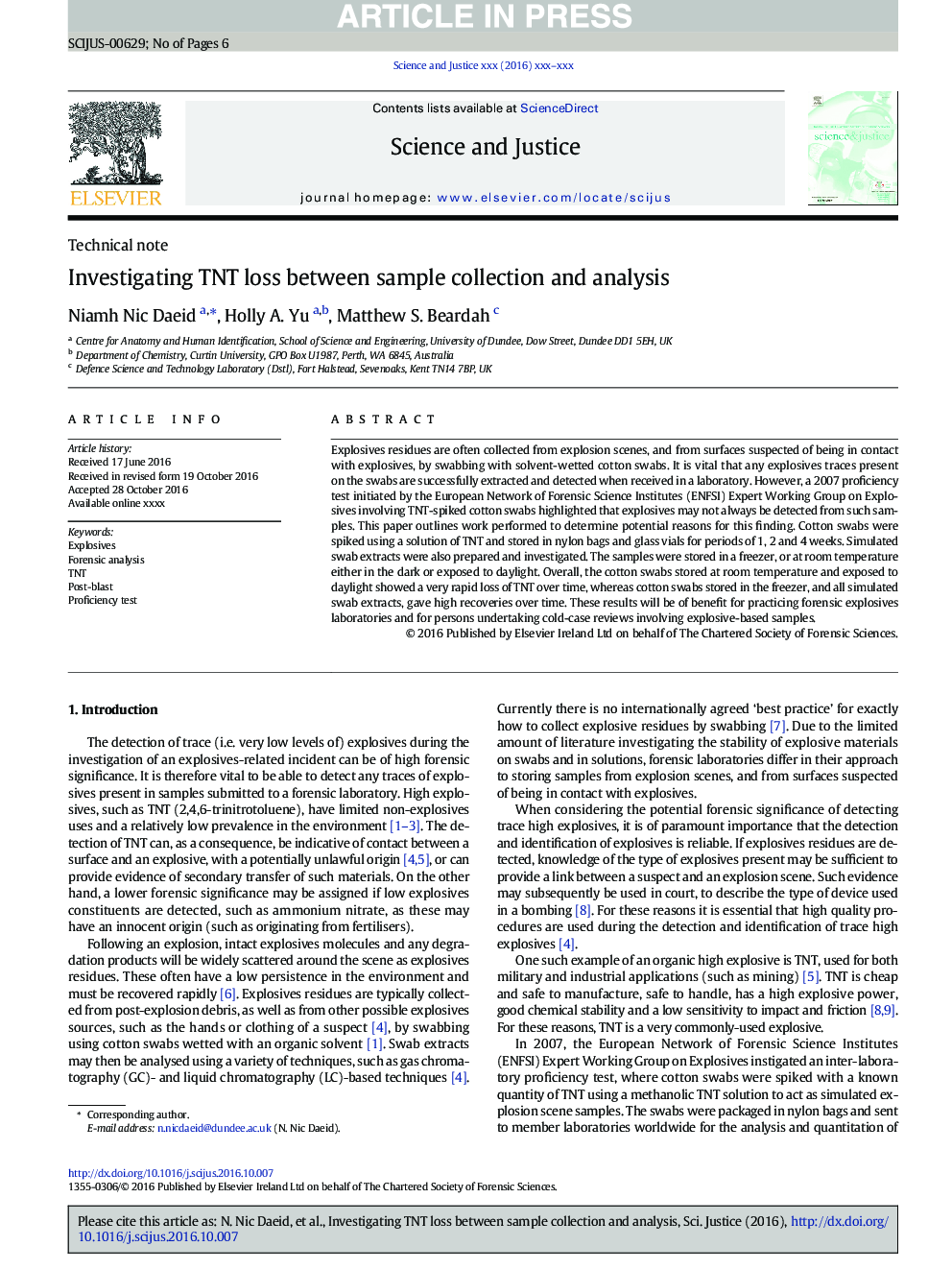| Article ID | Journal | Published Year | Pages | File Type |
|---|---|---|---|---|
| 4761364 | Science & Justice | 2017 | 6 Pages |
Abstract
Explosives residues are often collected from explosion scenes, and from surfaces suspected of being in contact with explosives, by swabbing with solvent-wetted cotton swabs. It is vital that any explosives traces present on the swabs are successfully extracted and detected when received in a laboratory. However, a 2007 proficiency test initiated by the European Network of Forensic Science Institutes (ENFSI) Expert Working Group on Explosives involving TNT-spiked cotton swabs highlighted that explosives may not always be detected from such samples. This paper outlines work performed to determine potential reasons for this finding. Cotton swabs were spiked using a solution of TNT and stored in nylon bags and glass vials for periods of 1, 2 and 4Â weeks. Simulated swab extracts were also prepared and investigated. The samples were stored in a freezer, or at room temperature either in the dark or exposed to daylight. Overall, the cotton swabs stored at room temperature and exposed to daylight showed a very rapid loss of TNT over time, whereas cotton swabs stored in the freezer, and all simulated swab extracts, gave high recoveries over time. These results will be of benefit for practicing forensic explosives laboratories and for persons undertaking cold-case reviews involving explosive-based samples.
Related Topics
Physical Sciences and Engineering
Chemistry
Analytical Chemistry
Authors
Niamh Nic Daeid, Holly A. Yu, Matthew S. Beardah,
